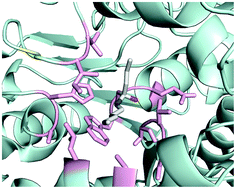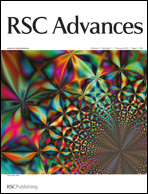Rational design for enhancing promiscuous activity of Candida antarctica lipase B: a clue for the molecular basis of dissimilar activities between lipase and serine-protease†
Abstract
Lipase and serine-protease display distinct activities toward esters and amides, although they share a common catalytic triad (Asp/Glu-His-Ser). Lipases can hydrolyze esters but scarcely amides, whereas serine-proteases catalyze the hydrolysis of esters as well as amides. This issue has remained unresolved for a long period of time. Recently, we proposed a molecular basis for the enhanced lipase-catalyzed N-acylation of 1-phenylethanamine using methoxyacetate as an acyl donor (ChemBioChem, 2006, 7, 1745). We hypothesized that the hydrogen atom connected to the nitrogen atom of the amine substrate can flip-flop and thus hamper the formation of the essential hydrogen bond between the catalytic histidine and the nitrogen atom of the substrate. The disruption could be avoided by fixing the position of the amide proton using methoxyacetate as a hydrogen-bond acceptor. Based on the hypothesis, we assumed that the introduction of a residue acting as a hydrogen-bond acceptor would improve the amidase activity (the reverse reaction of aminolysis) of lipase. Herein, we demonstrate that the introduction of a polar amino acid near the active site of Candida antarctica lipase B (CAL-B) enhances the initial rate of the hydrolysis toward 4-nitroacetanilide by a factor of up to 24. This result possibly provides a clue for understanding the molecular basis of the dissimilar activities of the two hydrolases.


 Please wait while we load your content...
Please wait while we load your content...